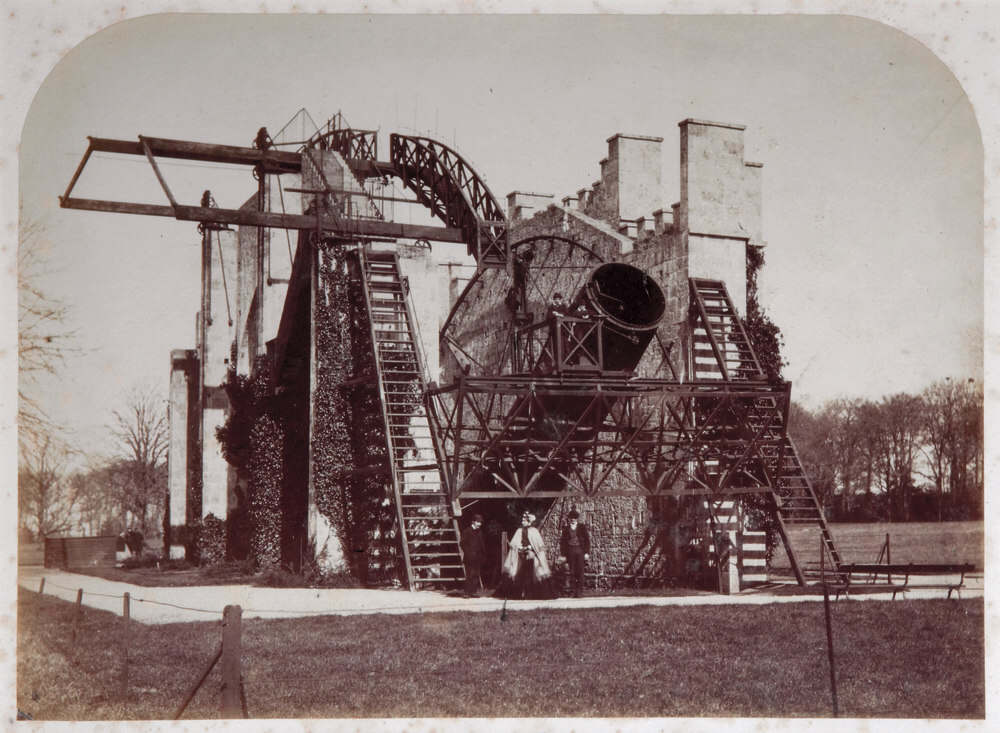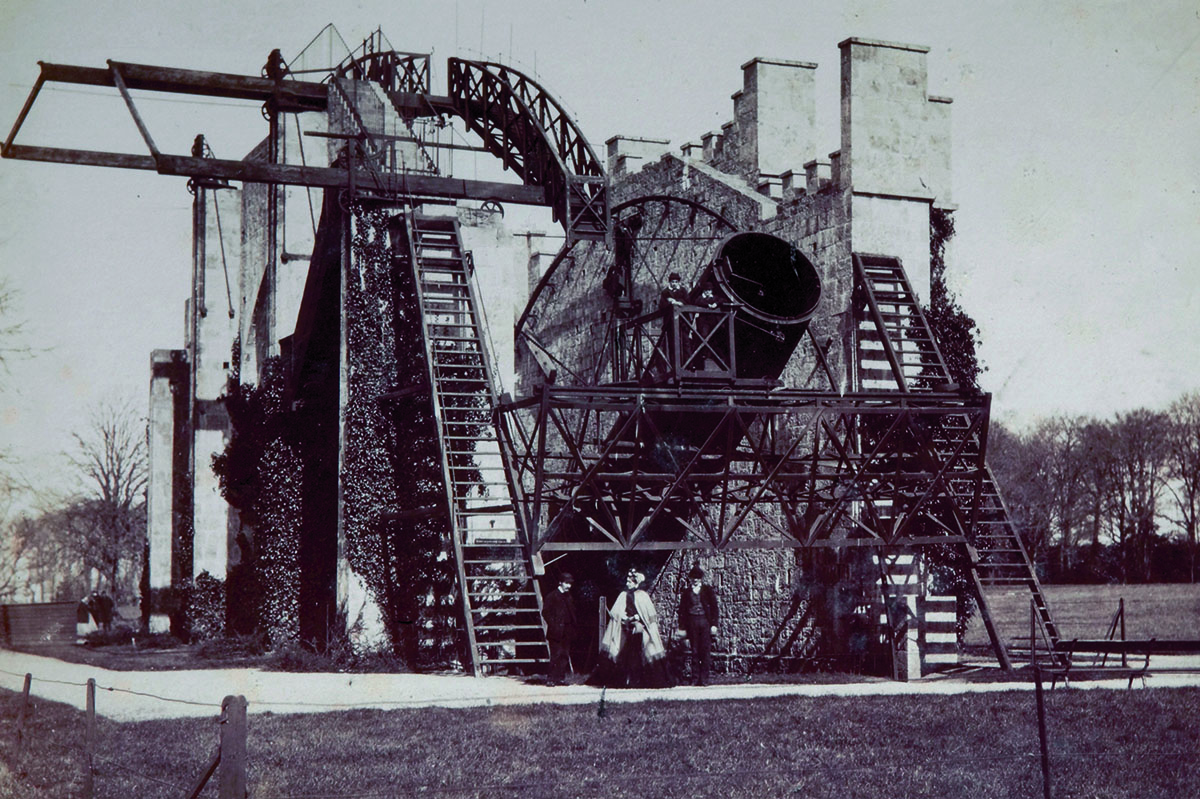The Great Telescope
In the early 1840’s, the Third Earl of Rosse designed and built the largest telescope in the world. With this telescope, he discovered the spiral nature of some of the galaxies, and from 1845-1914, anyone wishing to witness this phenomenon had to come to Birr. And they came, in their hundreds, from across Europe and beyond, to observe the stars with Lord Rosse or simply to marvel at this feat of engineering in the middle of Ireland.
This reflecting telescope remained the largest in the world for over 70 years. This ‘leviathan’ as it is named, remains in the centre of the Demesne as Ireland’s greatest scientific wonder and represents a masterpiece of human creative genius.
A visit to our historic science centre on site demonstrates how the extraordinary telescope was built in the castle workshops by the people of Birr. Scientific instruments are displayed, alongside models to explain how they were used.

Astronomy is still practiced today, and the research continue through the works of I-LOFAR which can also be found here at Birr Castle Demesne. Following the award of 1.4 million from Science Foundation Ireland to Trinity College, Trinity have built a cutting-edge radio telescope here on the demesne. I-LOFAR will connect Ireland to the international LOFAR telescope. This site is the perfect location for such a project following on in the spectacular shadows of the “Leviathan” otherwise known as the Great Telescope which was built at Birr Castle back in 1845 and the Leviathan remained that largest telescope in the world for 70 years.
For more information on I-LOFAR project please visit www.lofar.ie a project run by Trinity College Dublin.
World Heritage Aspirations
Ireland has three historic observatories that possess a remarkable astronomical heritage, one that stretches all the way back to the Georgian era. These are the observatories of Birr, Armagh and Dunsink. All three remain active today, places where frontline science continues to be carried out while also serving as centres for communicating science to the public and explaining it to students. Their heritage is entwined with the telescopes they possess, pioneering instruments of their time that are still found largely in situ today, in how these telescopes were used, and in the science that was carried out there. The heritage is so strong and so worthy of greater protection that these three Irish observatories have come together to seek UNESCO world heritage listing.
World Heritage is a designation provided by UNESCO – the United Nations Educational, Scientific and Cultural Organisation – for places that have outstanding universal value to humanity and are worthy of protection so that they can be appreciated and enjoyed by future generations.
Read More Birr Castle Demesne began as a private observatory of the 3rd Earl of Rosse, set in the grounds of his castle. It is most famous for the Great Leviathan of Parsonstown, he built in 1845, then the largest telescope in the world. Today, Birr also hosts one of the sites of the LOFAR radio telescope that is distributed across Europe. DIAS Dunsink Observatory, on the edge of Dublin, is the oldest of these three, established in 1785 by the Provost of Trinity College Dublin, Francis Andrews. It now forms a part of the School of Cosmic Physics in the Dublin Institute of Advanced Studies (DIAS). Armagh Observatory followed in 1790, with a bequest from Archbishop Richard Robinson, the Primate of All Ireland for the Church of Ireland, together with an Act of Parliament he arranged for, to found “an observatory and museum in Armagh for ever”. The Observatory has operated continuously ever since, now part of the Armagh Observatory and Planetarium. Armagh, Birr, and Dunsink observatories represent a living history, places of science running from their foundation to the present day and, hopefully, well into the future. As such they also display a deep astronomical heritage. We need to protect this heritage, to conserve and preserve their telescopes, instruments and archives, as well as to educate on the importance of science for society and to inspire the next generation. The observatories have now embarked on a journey to seek World Heritage designation to help achieve this objective.



